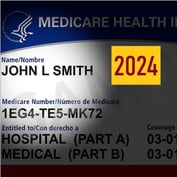Don’t you suspect that if you could afford the best accountants, you, too, would be privy to the tax-saving secrets reserved for the business elite? Aren’t you just a little intrigued by promoters who will reveal their unique and highly effective tax-reduction technique only after you sign an agreement not to reveal the details to others? Your clients are just as curious.
Tax loopholes are based on an interpretation of our complex and often undecipherable Internal Revenue Code. The more popular the technique, the more it catches the attention of the IRS–and the more likely the law will be changed to curb abuse. Some promoters who have built businesses on these techniques may protest, claiming their particular arrangement is not affected by the new tax regulations. More prudent tax planners will adapt their programs or move on to other types of tax shelters.
The 419 welfare benefit plan is a tax planning technique currently experiencing an evolution. Knowing its history and what is different today will help you make better recommendations to your clients.
Welfare Benefit Plans of the Past
One of the more popular tax reduction techniques of the last couple of decades was the multiple employer welfare benefit plan. Better known as the 419 plan, this tax shelter was particularly attractive to owner/employees who were worried about taxes and their retirement security. For the small business, the 419 plan promised unlimited tax deductions for benefits reserved for favored employees, including the owner. On paper, the plan was limited to medical, disability, death, or involuntary termination (severance) benefits. But in reality, the 419 plan promised retirement benefits for owners of S corporations and other pass-through tax entities that had little opportunity for deferred compensation or other fringe benefits.
In 1984, Congress eliminated the tax-deductible contribution limits for welfare benefit plans that consisted of groups of 10 or more employers. Congress believed that, by grouping employers into one plan, each employer would contribute the minimum necessary to fund the desired benefits. There would be no incentive to overfund the plan and thus no need to place limits on contributions. In practice, individual employer contributions were not commingled, and participating employers were protected from the risk of paying for benefits triggered by other members’ employees.
As beneficial as Congress viewed welfare benefits, many employers were less interested in funding severance and death benefits than they were in securing retirement benefits for themselves. A skilled salesperson, however, could explain how to manipulate the 419 plan to benefit the business owner. The plan would be dismantled at the convenience of the business owner and the plan assets would be distributed pro rata to the participating employees. A good example would be a doctor winding down his practice prior to retirement. It is likely that he would be the last employee out the door and therefore the sole benefactor of the 419 plan. The distribution would be taxed like any other compensation.
If It Looks Like a Duck . . .
Some promoters spent more time illustrating the plan termination in their presentations than on the potential welfare benefits for the employees. The true intent of the plan did not escape the courts, and negative decisions resulted in thousands of employers paying back taxes and penalties. The 419 plan abuses got the attention of Congress, and, in 2003, new regulations were put into place to make them less attractive to businesses looking for tax-deductible fringe benefits intended to favor the business owner and key employees. Existing plans reacted by modifying their terms, reclassifying themselves, or closing altogether.
Voluntary Employee Benefit Associations (VEBAs), the welfare plan’s little sister, stepped in, touting their IRS determination letter. The VEBA didn’t have the popularity of the 419 plan because contributions were subject to limits and there were fewer opportunities to exclude the rank-and-file employee. Every VEBA must qualify as a tax-exempt trust at its inception by obtaining an IRS determination. The determination letter does not guarantee that the employer’s contributions will qualify for tax deductions. Many employers who unwittingly participated in the most aggressive VEBA arrangements found themselves also paying back taxes and penalties.
Welfare Benefit Plans Today








 April 01, 2006 at 02:00 AM
April 01, 2006 at 02:00 AM










